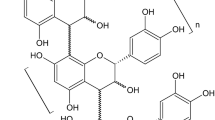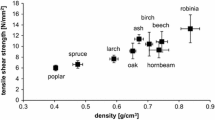Summary
Historically, adhesive development has been a propelling force in the evolution of the forest product industry. The 1973 energy crisis has caused the wood industry to focus its attention on the necessity of adhesive self-sufficiency. Research in the use of bark, pulp waste liquor and foliage for adhesive application is rapidly spreading.
In addition, many new adhesives have been proposed by the chemical industry as alternatives for wood bonding. Recently developed physiochemical analytical methods have been successfully applied to this adhesive research area and to durability evaluation. However, there are still enormous difficulties in developing a durable natural product adhesive of low variability as well as a unified international interpretation of bond durability.
Phenolic resins have weathered the energy crisis and are gaining importance in the industry. Some examples of recent contributions from phenolic-resin research to panel board and lumber end-joint developments will be discussed in detail.
Similar content being viewed by others
References
Abe, I. 1970: Study of lignin formalydehyde resin. Hokkaido Forest Products Research Institute Report H55, March: 131 p
Chow, S., Steiner, P. R. 1979: Comparisons of the cure of phenol-formaldehyde novalac and resol systems by differential scanning calorimetry. J. Appl. Polym. Sci. 23: 1973–1985
Chow, S.; Rozon, L.; Steiner, P. R. 1979. Efficiency of coniferous foliage as extender for powdered phenolic resin. Proc. Thirteenth Particleboard Symp., Wash. State Univ. Pullman, Wa. 329–342
Chow, S.; Caster, R. W. 1978: Relationship of adhesive softening temperature to exposure tests for bond durability. Forest Prod. J. 28(6): 38–43
Chow, S. 1977: A curing study of phenol-resorcinol-formaldehyde resins using infrared spectrophotometer and thermal analysis. Holzforschung 31(6): 200–205
Chow, S. 1976: A method of joining bodies of green lumber by fingerjoints. U.S. Patent 3985169
Chow, S.; Chow, Y. L. 1974: Laser Raman spectral study of resol formation. J. Appl. Polym. Sci. 18: 735–744
Chow, S.; Hancock, W. V. 1969: Method for determining degree of cure of phenolic resin. Forest Prod. J. 19(4): 21–29
Clad, W.; Schmidt-Hellerau, C. 1977: Particleboard for the building industry: Performance and suitability tests. Proc. Eleventh Particleboard Symp., Pullman, Wa. 33–61
Deppe, H. J. 1977: Technical progress in the use of isocyanate in particleboard. Holz RohWerkstoff 35: 295–300
Deppe, H. J.; Ernst, K. 1971: Isocyanates as adhesives for particleboard. Holz Roh-Werkstoff 29: 45–50
Dolenko, A. J.; Clarke, M. R. 1978: Resin binders kraft lignin. Forest Prod. J. 28(8): 41–46
Ellingson, G. P. 1977: Elcoboard: a structure composite panel. Proc. Eleventh Particleboard Symp., Wash. State Univ., Pullman, Wa.: 369–382
Freeman, J. H., Lewis, C. W. 1954: Alkaline-catalyzed reaction of formaldehyde and the methylols of phenol: a kinetic study. J. Am. Chem. Soc. 76: 2080–2087
Frink, J. W.; Sachs, H. I. 1981: Isocyanate binders for composite boards. Am. Chem. Soc. Sumposium Series 172: 289–309
Funako, M.; Abe, I. 1978: The reaction of lignin under the presence of phenol and boron trifluoride. I. on the formation of catechol from MWL, dioxane lignin and kraft lignin. Japan Wood Res. Soc. J. 24(4): 256–261
Gallagher, J. A. 1982: Urethane bonded particleboard. Forest prod. J. 32(4): 26–33
Goring, D. A. I. 1963: Thermal softening of lignin, hemicellulose and cellulose. Pulp Paper Mag. Can. 64: T517-T527
Hanetho, P. 1978: Formaldehyde emissions from particleboard and other building materials: a study of Scandinavian countries. Proc. Twelfth Particleboard Symp.; Wash. State Univ., Pullman, Wa.: 275–286
Hemingway R. W.; McGraw G. W.; Karchesy J. 1979: Condensation of hydroxybenzyl alcohols with catechin: A model for methylolphenols in conifer bark polyflavonoid adhesives. Proc. Symp. Phenolic Resins. Weyerhaeuser Co., Tacoma, Wa. 33–68
Hillis, W. E. 1979: Natural polyphenols (tannins) as a basis for adhesives. Proc. Symp. Chem. Phenolic Resins. Weyerhaeuser Co., Tacoma, Wa., 171–187
Holderby, J. M.; Olson, H. S.; Wegener, W. H. 1967: Thermosetting adhesive from electrodialyzed lignosulfonates. Tappi 50(9): 92A-94A
Hse, C. Y. 1978: Development of resin system for gluing southern hardwood flakeboards. Proc. Symp. on Structural Flakeboard from Forest Residues. U.S. Forest Service,81–92
Johansen, T. A. 1971: Particleboard bonded with sulphite liquor. Proc. Fifth Particleboard Symp., Wash. State Univ., Pullman, Wa.:11–30
Johns, W. E. 1981: Personal communication
Kissler, K.; Christianson, P.; Tanner, J.; Starkopf, J. 1979: Synthesis and applications of alkylresorcinol-formaldehyde adhesives. Proc. Symp.Chem. Phenolic Resins. Weyerhaeuser Co., Tacoma, Wa. 223–230
Lambuth, A. 1981: Aqueous polyisocyanate-lignin adhesives. U.S. Patent 4, 279, 788
Marton, J.; Matton, T.; Falkenhag, S.; Alder E. 1966: In: Marton, J.(Ed.): Lignin Structure and Reactions. Advanced Chem. Ser. No. 59. Am. Chem. Soc., Washington, D. C.: 125–144
Meyer, G.; Nagaoka, M. 1981: Formaldehyde emission: method of measurement and effect of several particleboard variables.Wood Sci. 13(3): 140–150
Pagel, H.; Luckman 1981: Emulsion polymer isocyanate: a durable, waterbased wood adhesive. Adhesive Age. Oct.: 34–39
Roffael, E. 1978: Progress in the elimination of formaldehyde liberation form particleboard. Proc. Twelfth Particleboard Symp.,Wash. State Univ., Pullman, Wa.: 233–250
Shen, K. C. 1977: Spent sulphite liquor binder for exterior waferboard. Forest Prod. J. 27(5): 32–36
Steiner, P. R. 1981: The forests as a source of natural adhesives. In: Oliver, J. R. (Ed.): Adhesion in cellulosic and wood-based composites. pp. 67–88. New York, London: Plenum Press
Steiner, P. R.; Chow, S.; Vadja, S. 1980: Interaction of polyisocyanate adhesive with wood. Forest Prod. J. 30(7): 21–27
Steiner, P. R. 1975: Phenol-formaldehyde wood adhesive characterization by proton magnetic resonance spectroscopy. J. Appl. Polym. Sci 19: 215–225
Author information
Authors and Affiliations
Additional information
Academy Lecture held at Kyoto University, Japan in September 1981 for the Fellows of the International Academy of Wood Science and the Participants of the IUFRO XVII World Congress
Rights and permissions
About this article
Cite this article
Chow, S. Adhesive developments in forest products. Wood Sci. Technol. 17, 1–11 (1983). https://doi.org/10.1007/BF00351828
Received:
Issue Date:
DOI: https://doi.org/10.1007/BF00351828




